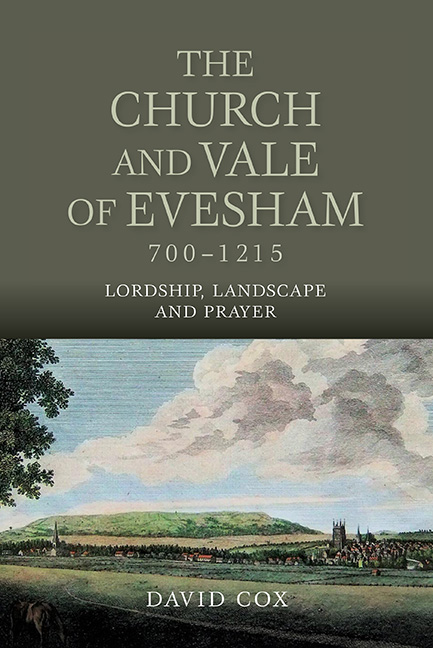Book contents
- Frontmatter
- Dedication
- Contents
- List of Illustrations
- Preface
- Timeline
- List of Abbreviations
- Part I From Minster to Abbey (701–1078)
- Part II Abbot Walter (1078–1104)
- Part III Twelfth-Century Themes (1104–1215)
- Afterword
- Appendix: The Abbots of Evesham to 1215
- Select Bibliography
- Index
- Miscellaneous Endmatter
8 - Abbot Manni, the Town, and the Vale
Published online by Cambridge University Press: 11 May 2021
- Frontmatter
- Dedication
- Contents
- List of Illustrations
- Preface
- Timeline
- List of Abbreviations
- Part I From Minster to Abbey (701–1078)
- Part II Abbot Walter (1078–1104)
- Part III Twelfth-Century Themes (1104–1215)
- Afterword
- Appendix: The Abbots of Evesham to 1215
- Select Bibliography
- Index
- Miscellaneous Endmatter
Summary
WITHIN three weeks of Ælfweard's death the artist and craftsman Manni had been appointed to succeed him as abbot of Evesham; because the death was expected, it is likely that Manni had been designated some time earlier. Manni was a Danish name that the English spelt ‘Mannig’ and he seems in fact to have been of mixed Danish and English blood because he also had the English name Wulfmær, though it was rarely used. At a council held in London King Edward appointed Manni as the new abbot and he was consecrated on 10 August 1044. It may seem odd that an artist–craftsman, albeit a monk, should have been chosen to manage a wealthy abbey, but Manni could draw on strong support both outside the abbey and within. Earl Leofric continued to favour Evesham until his death in 1057, and Manni had in Æthelwig a deputy whose exceptional talents lay in law and administration.
It was perhaps to be expected, however, that Manni would make less of a mark in public life than his predecessor, and the few surviving records do leave that impression. Abbot Manni occurs as a witness to deeds of two bishops of Worcester, Lyfing (in 1045) and Ealdred (in 1046×1053 and c.1053). Between 1053 and 1055 he also witnessed, as the first among six abbots, an agreement between Wulfwig bishop of Dorchester on the one part and Earl Leofric and the Lady Godiva on the other concerning the monastery at Stow in Lincolnshire. Being on good terms with the bishop of Worcester and with the earl of Mercia was important but the abbey would try to profit from the goodwill of anyone that had local influence. When the young son of a prosperous person was admitted to Evesham as a potential monk the grateful parent might be expected to mark the occasion with a gift to the house. Thus in 1046 or 1047 a certain Wulfgeat gave the abbey an estate at Witton near Droitwich when his son Ælfgeat joined the community, and Wulfgeat placed his deed of grant on the altar of the abbey church to confirm the donation publicly.
- Type
- Chapter
- Information
- The Church and Vale of Evesham, 700-1215Lordship, Landscape and Prayer, pp. 68 - 77Publisher: Boydell & BrewerPrint publication year: 2015



